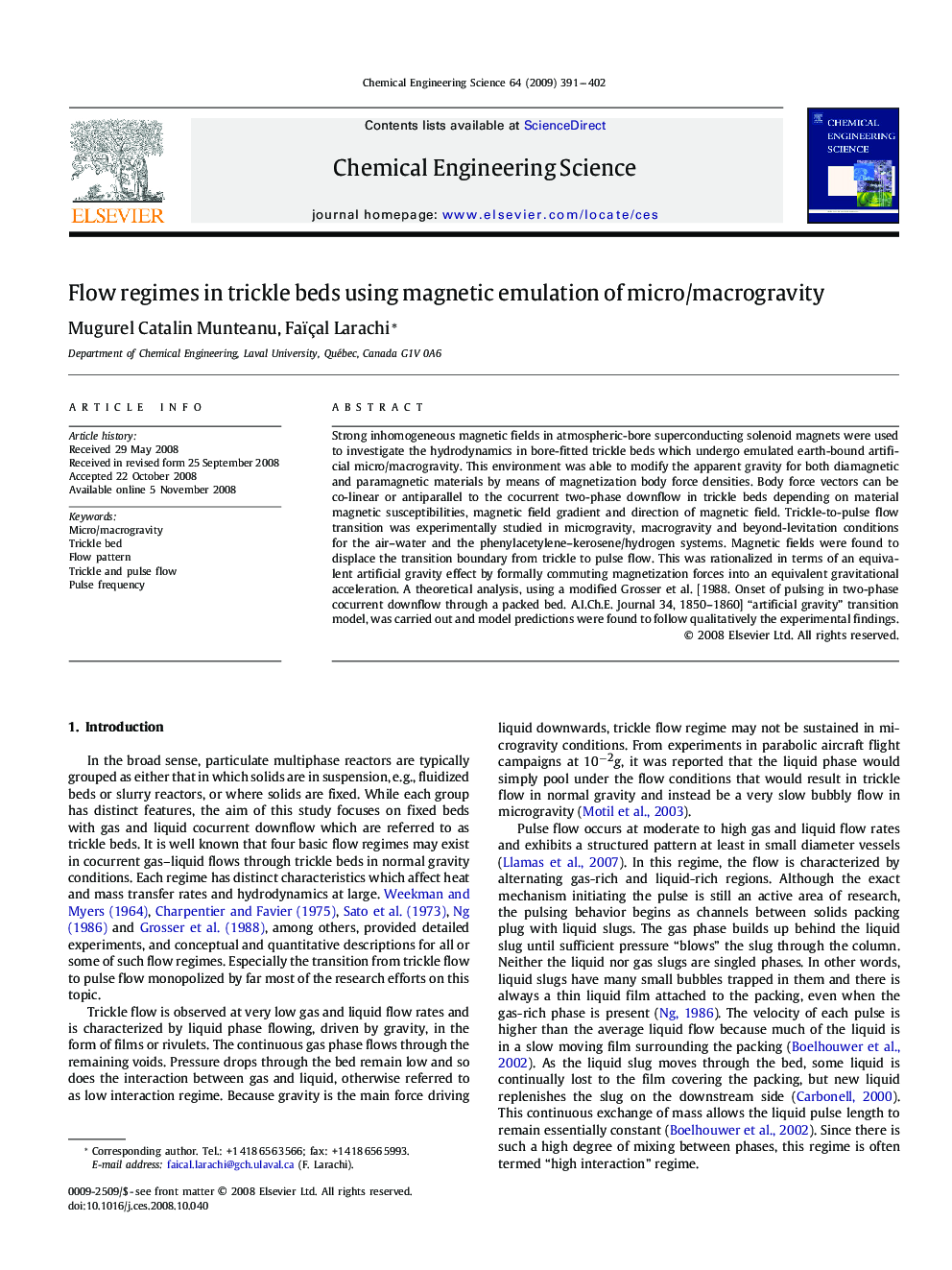| Article ID | Journal | Published Year | Pages | File Type |
|---|---|---|---|---|
| 158031 | Chemical Engineering Science | 2009 | 12 Pages |
Strong inhomogeneous magnetic fields in atmospheric-bore superconducting solenoid magnets were used to investigate the hydrodynamics in bore-fitted trickle beds which undergo emulated earth-bound artificial micro/macrogravity. This environment was able to modify the apparent gravity for both diamagnetic and paramagnetic materials by means of magnetization body force densities. Body force vectors can be co-linear or antiparallel to the cocurrent two-phase downflow in trickle beds depending on material magnetic susceptibilities, magnetic field gradient and direction of magnetic field. Trickle-to-pulse flow transition was experimentally studied in microgravity, macrogravity and beyond-levitation conditions for the air–water and the phenylacetylene–kerosene/hydrogen systems. Magnetic fields were found to displace the transition boundary from trickle to pulse flow. This was rationalized in terms of an equivalent artificial gravity effect by formally commuting magnetization forces into an equivalent gravitational acceleration. A theoretical analysis, using a modified Grosser et al. [1988. Onset of pulsing in two-phase cocurrent downflow through a packed bed. A.I.Ch.E. Journal 34, 1850–1860] “artificial gravity” transition model, was carried out and model predictions were found to follow qualitatively the experimental findings.
